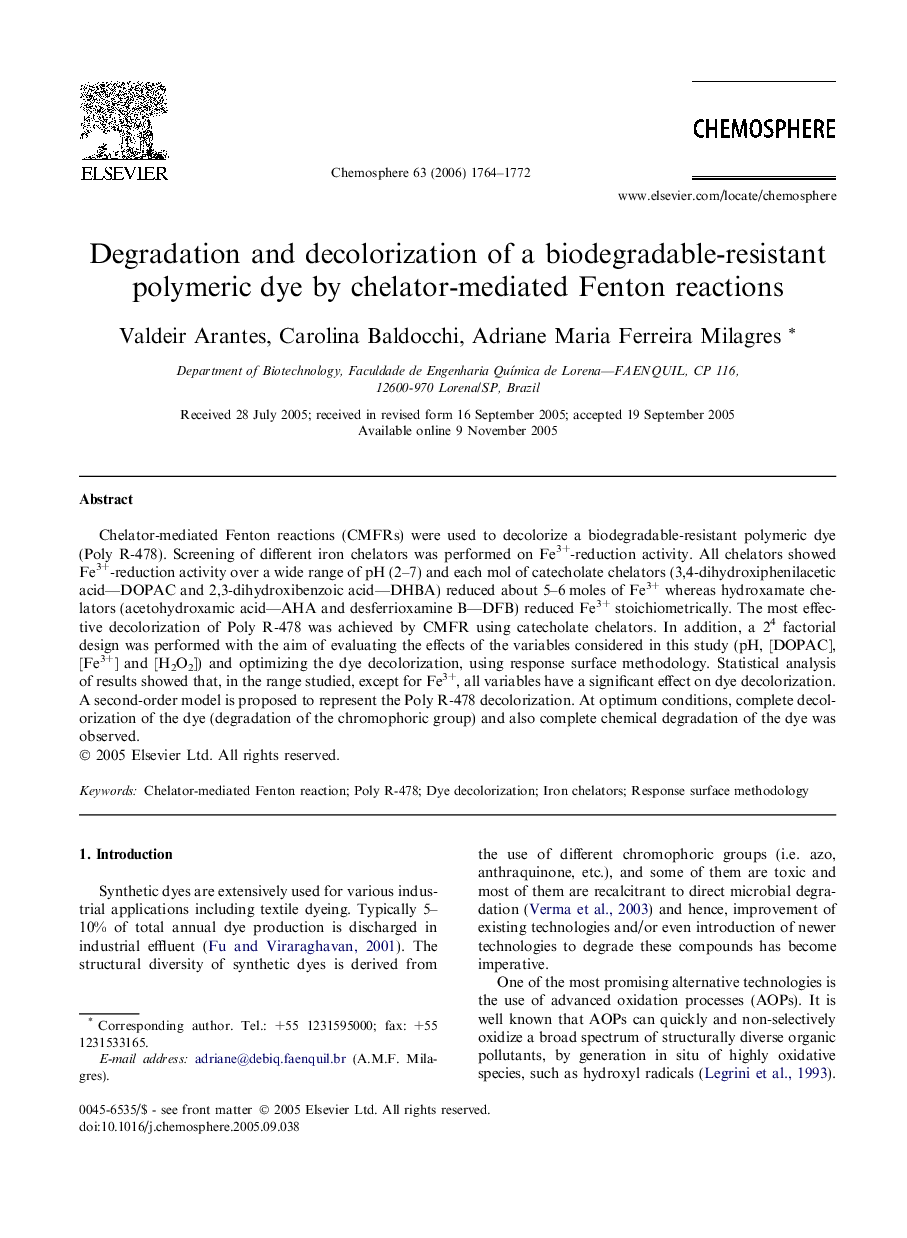| Article ID | Journal | Published Year | Pages | File Type |
|---|---|---|---|---|
| 4416471 | Chemosphere | 2006 | 9 Pages |
Chelator-mediated Fenton reactions (CMFRs) were used to decolorize a biodegradable-resistant polymeric dye (Poly R-478). Screening of different iron chelators was performed on Fe3+-reduction activity. All chelators showed Fe3+-reduction activity over a wide range of pH (2–7) and each mol of catecholate chelators (3,4-dihydroxiphenilacetic acid—DOPAC and 2,3-dihydroxibenzoic acid—DHBA) reduced about 5–6 moles of Fe3+ whereas hydroxamate chelators (acetohydroxamic acid—AHA and desferrioxamine B—DFB) reduced Fe3+ stoichiometrically. The most effective decolorization of Poly R-478 was achieved by CMFR using catecholate chelators. In addition, a 24 factorial design was performed with the aim of evaluating the effects of the variables considered in this study (pH, [DOPAC], [Fe3+] and [H2O2]) and optimizing the dye decolorization, using response surface methodology. Statistical analysis of results showed that, in the range studied, except for Fe3+, all variables have a significant effect on dye decolorization. A second-order model is proposed to represent the Poly R-478 decolorization. At optimum conditions, complete decolorization of the dye (degradation of the chromophoric group) and also complete chemical degradation of the dye was observed.
